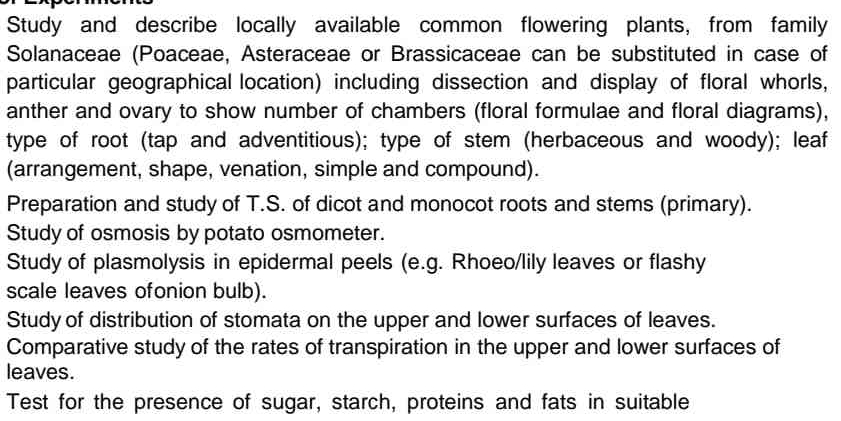Study and describe locally available common flowering plants, from family Solanaceae (Poaceae, Asteraceae or Brassicaceae can be substituted in case of particular geographical loca... Study and describe locally available common flowering plants, from family Solanaceae (Poaceae, Asteraceae or Brassicaceae can be substituted in case of particular geographical location) including dissection and display of floral whorls, type of root, type of stem, preparation and study of T.S. of dicot and monocot roots and stems, study of osmosis by potato osmometers, study of plasmolysis in epidermal peels, study of distribution of stomata, and test for the presence of sugar, starch, proteins and fats.

Understand the Problem
The question is asking for a detailed study and description of various biological experiments related to flowering plants, including their anatomical features and physiological processes such as osmosis and transpiration. The aim is to provide a comprehensive overview of the experiments outlined.
Answer
Study plant anatomy, physiological experiments, and biochemical tests.
To study a flowering plant from Solanaceae: dissect the flower to study whorls and chambers; examine roots and stems for type; prepare sections to compare dicot and monocot structures; use experiments for osmosis and plasmolysis; analyze stomata distribution and test for biochemical components.
Answer for screen readers
To study a flowering plant from Solanaceae: dissect the flower to study whorls and chambers; examine roots and stems for type; prepare sections to compare dicot and monocot structures; use experiments for osmosis and plasmolysis; analyze stomata distribution and test for biochemical components.
More Information
Studying flowering plants involves an in-depth analysis of their structures and physiological processes. This includes understanding their reproductive parts, root and stem architecture, and biochemical makeup through various experiments.
Tips
A common mistake is not correctly identifying the family traits of the plant. Ensure to examine floral and vegetative structures carefully.
Sources
- Three Locally Available Common Flowering Plants - Study And... - byjus.com
- Study and describe a locally available common flowering plant... - punainternationalschool.com
- Xi Biology Practical | PDF | Carbohydrates | Polysaccharide - Scribd - scribd.com
AI-generated content may contain errors. Please verify critical information